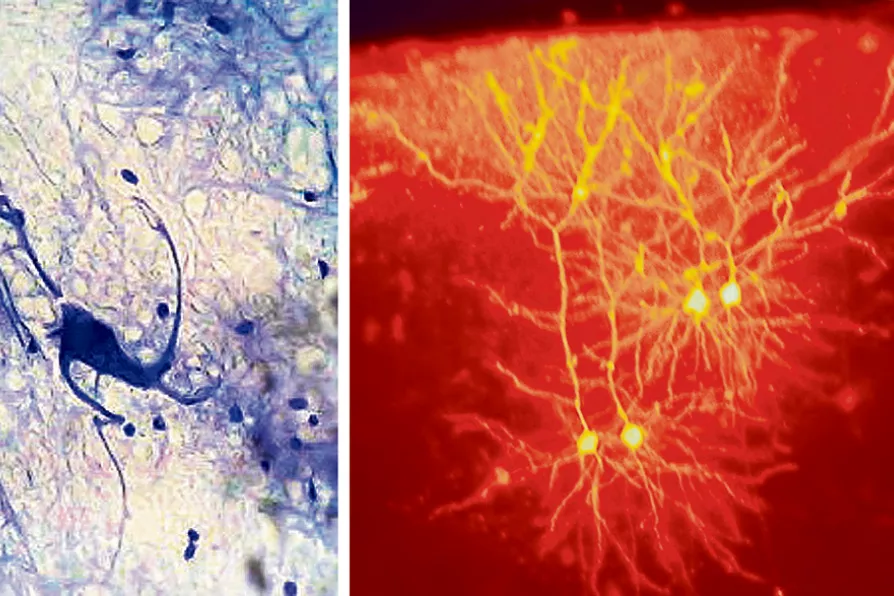Rather than hoping for the emergence of some new ‘party of the left,’ EMMA DENT COAD sees a broad alliance of local parties and community groups as a way of reviving democratic progressive politics

 SEEING IS BELIEVING: (Left) Tyramide filled neurons from the cingulate cortex of mouse brain, (above) a neuron as seen through a microscope
SEEING IS BELIEVING: (Left) Tyramide filled neurons from the cingulate cortex of mouse brain, (above) a neuron as seen through a microscope
THE problem of consciousness lies at the heart of our experience of the world. Consciousness is a philosophical question, as well as a political, artistic and legal one, but as ever, some scientists increasingly believe that they are closing in on the answer to its physical and biological basis.
The story of consciousness begins with the extraordinary connectivity of the cells in our brains. Brain cells (neurons) come in many shapes and sizes, but to the untrained eye they look a lot like plant roots with a long, spindly central body that splits into thousands of branching fibres. At the tip of each branch is a synapse, where signals pass to other neurons, either to its tip, or along its body.
An adult human brain has around 86 billion neurons, each of which is connected to an average 7,000 other cells, making approximately 100 trillion connections overall. In comparison, there are currently only an estimated 4.5 billion websites, and close to 50 billion computers making up the internet. This incredible connectedness makes the brain an extremely unusual organ — and it is the connectedness itself which researchers believe is crucial to the production of what we experience as consciousness.

A maverick’s self-inflicted snake bites could unlock breakthrough treatments – but they also reveal deeper tensions between noble scientific curiosity and cold corporate callousness, write ROX MIDDLETON, LIAM SHAW and MIRIAM GAUNTLETT
Science has always been mixed up with money and power, but as a decorative facade for megayachts, it risks leaving reality behind altogether, write ROX MIDDLETON, LIAM SHAW and MIRIAM GAUNTLETT














